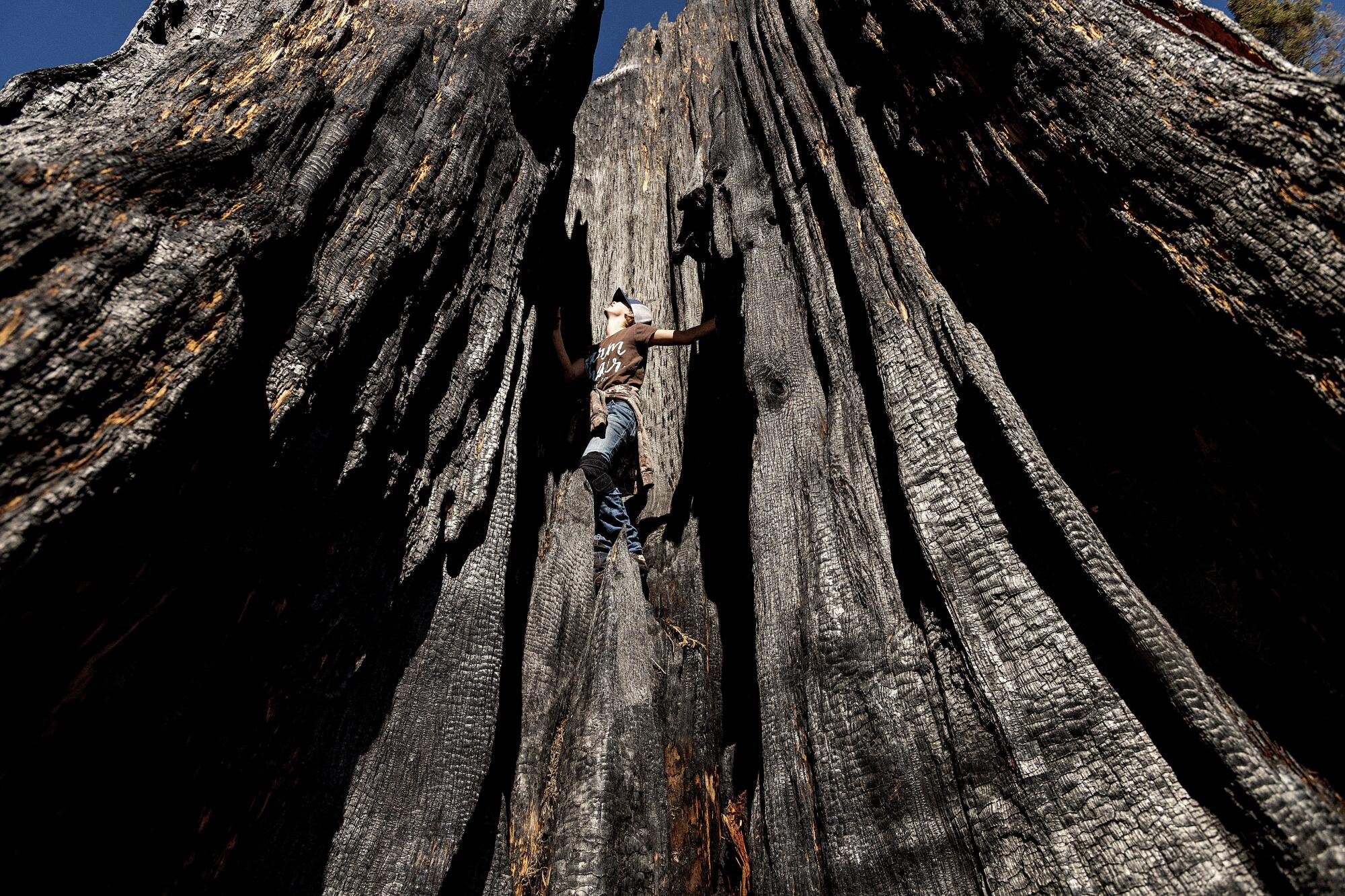
- Share via
SEQUOIA CREST, Calif. — Ashtyn Perry was barely as tall as the shovel she stomped into barren ground where a wildfire last year ravaged the California mountain community of Sequoia Crest and destroyed dozens of its signature behemoth trees.
The 13-year-old with a broad smile and a braid running to her waist had a higher purpose that — if successful — she’ll never live to see: to plant a baby sequoia that could grow into a giant and live for millennia.
“It’s really cool knowing it could be a big tree in like a thousand years,” she said.

The bright green seedling that barely reached Perry’s knees is part of an unusual project to plant offspring from some of the largest and oldest trees on the planet to see if genes that allowed the parent to survive so long will protect new growth from the perils of climate change.
The effort led by the Archangel Ancient Tree Archive, a Michigan nonprofit that preserves the genetics of old-growth trees, is one of many extraordinary measures being taken to save giant sequoias that were once considered nearly fireproof but are at risk of being wiped out by more intense wildfires.
The giant sequoia is the world’s largest tree by volume and closely related to the redwood, the world’s tallest. Sequoias grow naturally only in a 260-mile belt of forest on the western slopes of the Sierra Nevada. They have massive trunks and can grow more than 300 feet tall. The coast redwood is more slender and is native near the Pacific Ocean in Northern California.
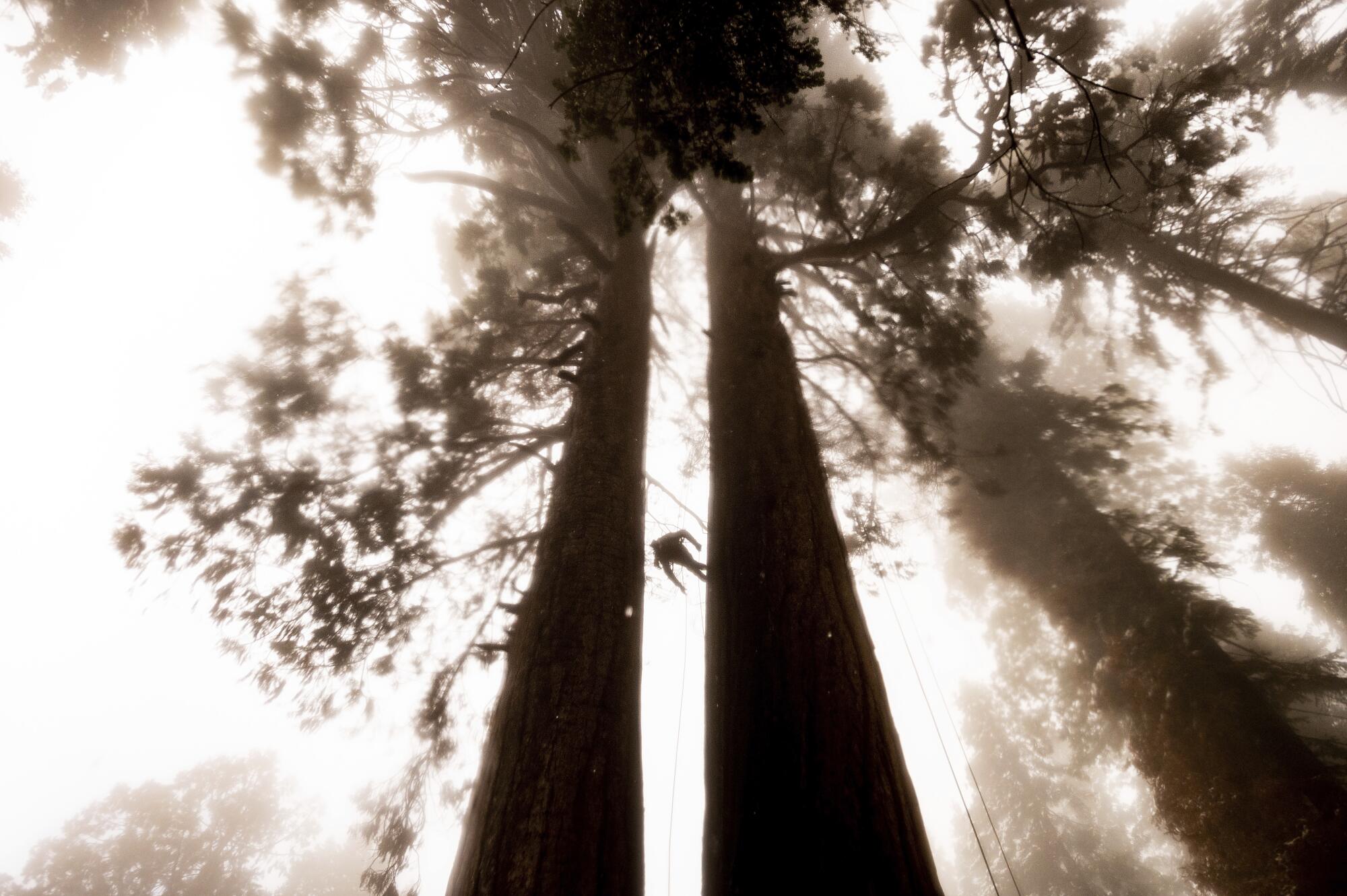
Giant sequoias — and redwoods — are some of the best fire-adapted plants. Thick bark protects their trunks, and their canopies can be so high they are out of reach of flames. Sequoias even rely on fire to help open their cones disperse seeds, and flames clear undergrowth so seedlings can take root and get sunlight.
In recorded history, large sequoias had never incinerated before 2015. Destruction of the majestic trees hit unprecedented levels last year when 10% to 14% of the estimated 75,000 trees larger than 4 feet in diameter burned. Thousands more potentially were lost this year during fires that burned into 27 groves — about a third of all groves.
An initial assessment released Tuesday by Sequoia National Forest said the Windy fire killed hundreds of giant sequoias and many more burned trees may not survive. Scientists are still tallying the damage in neighboring Sequoia National Park from a different lightning-sparked fire.
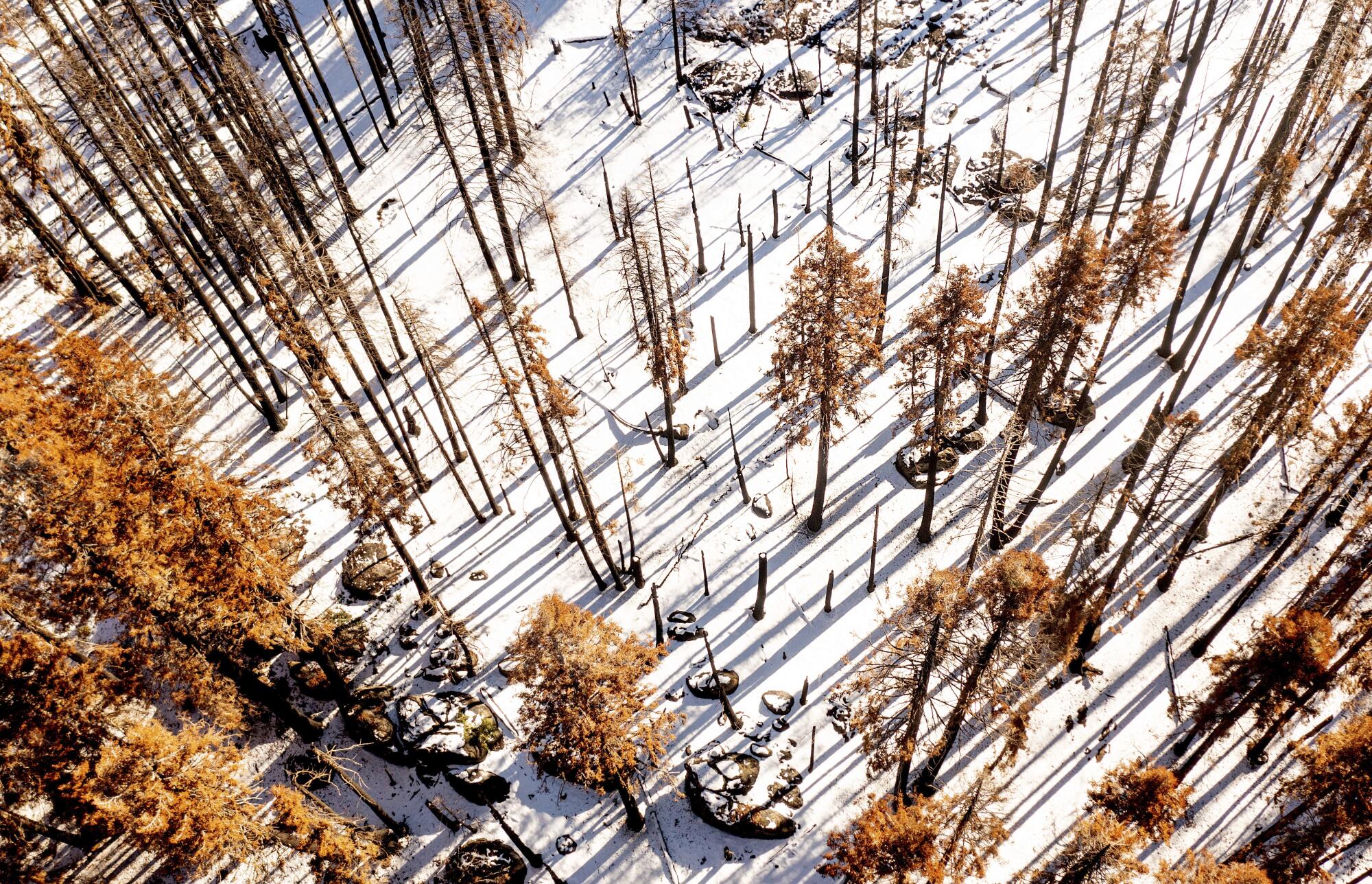


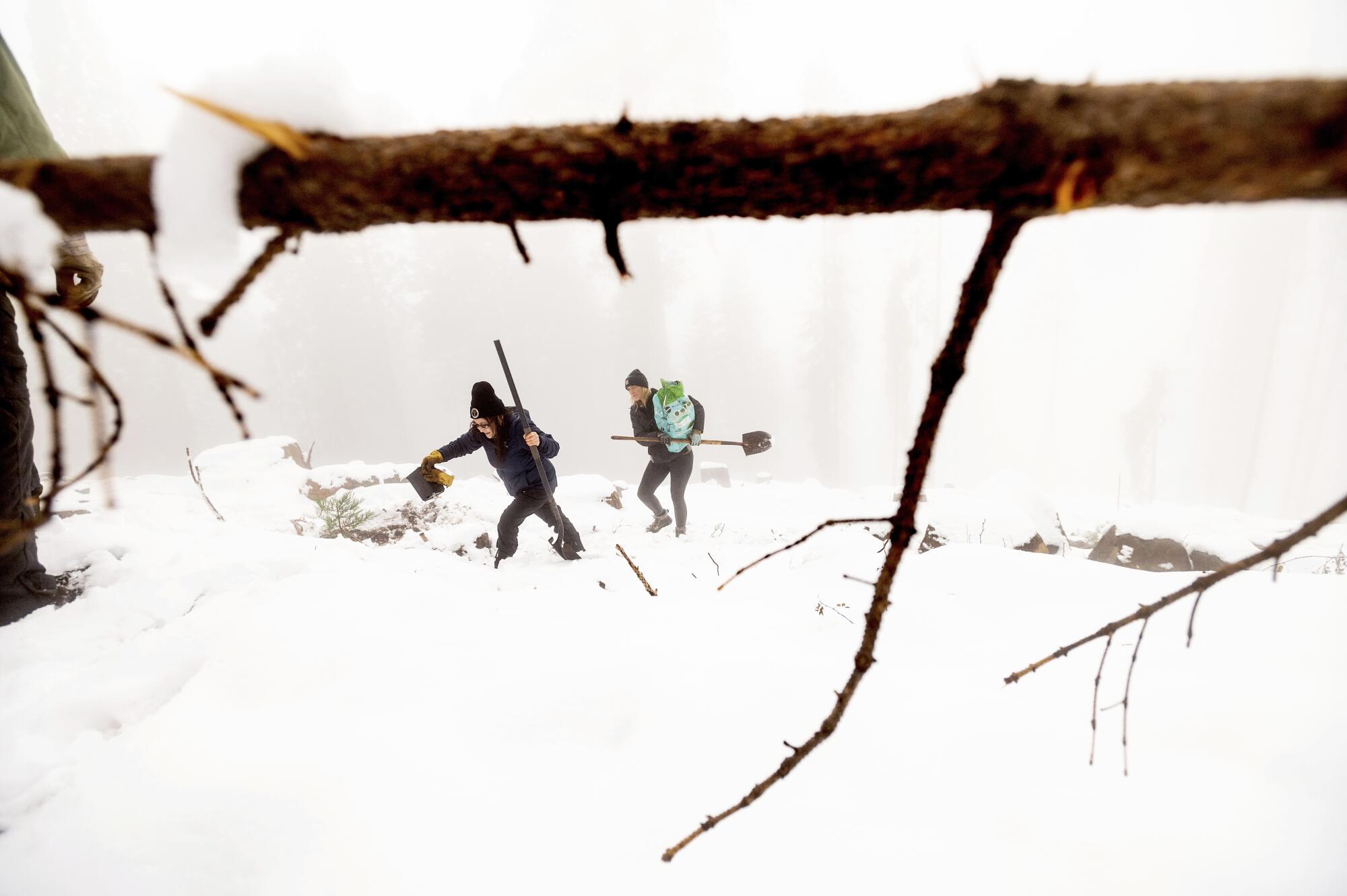
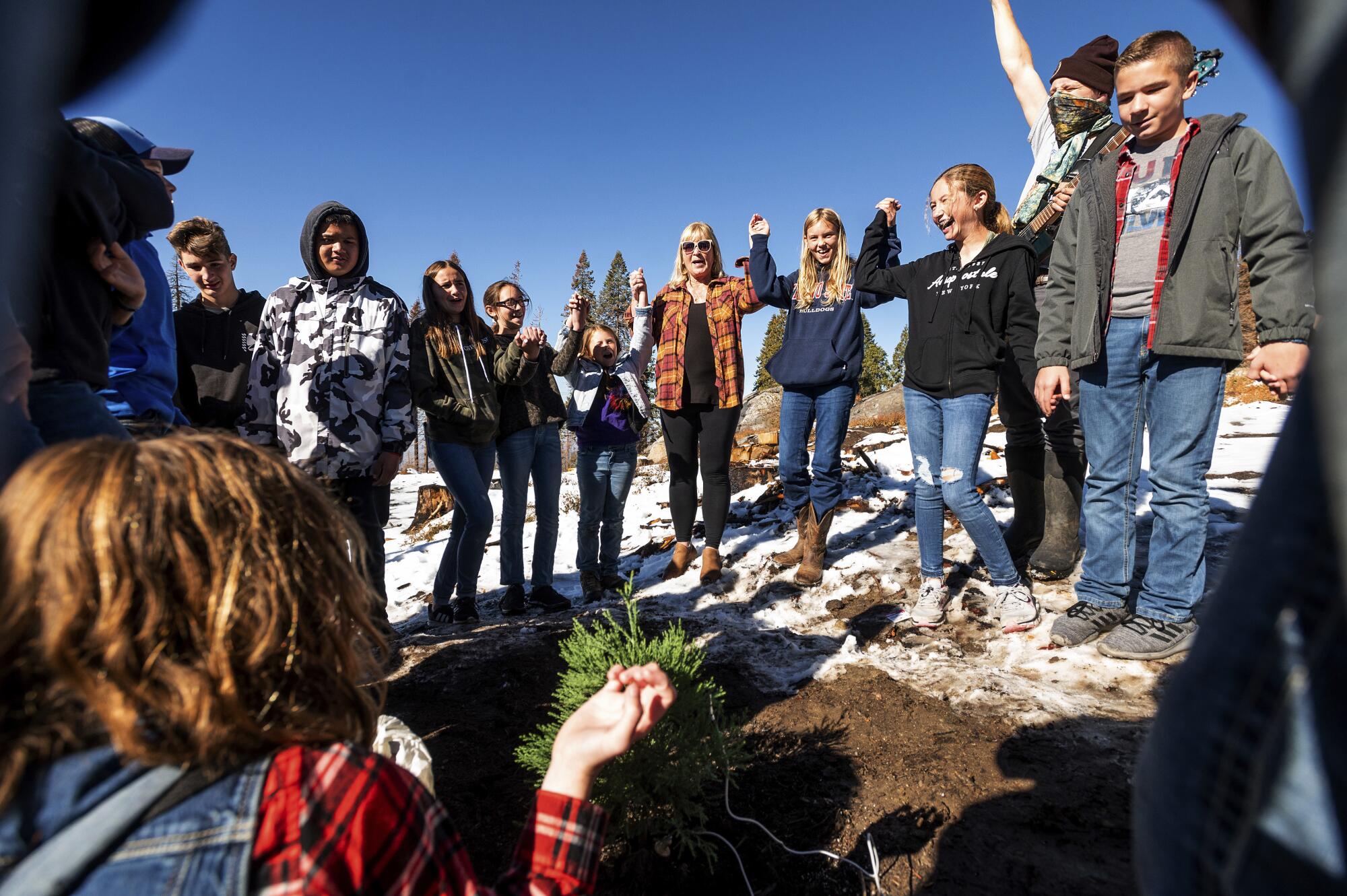
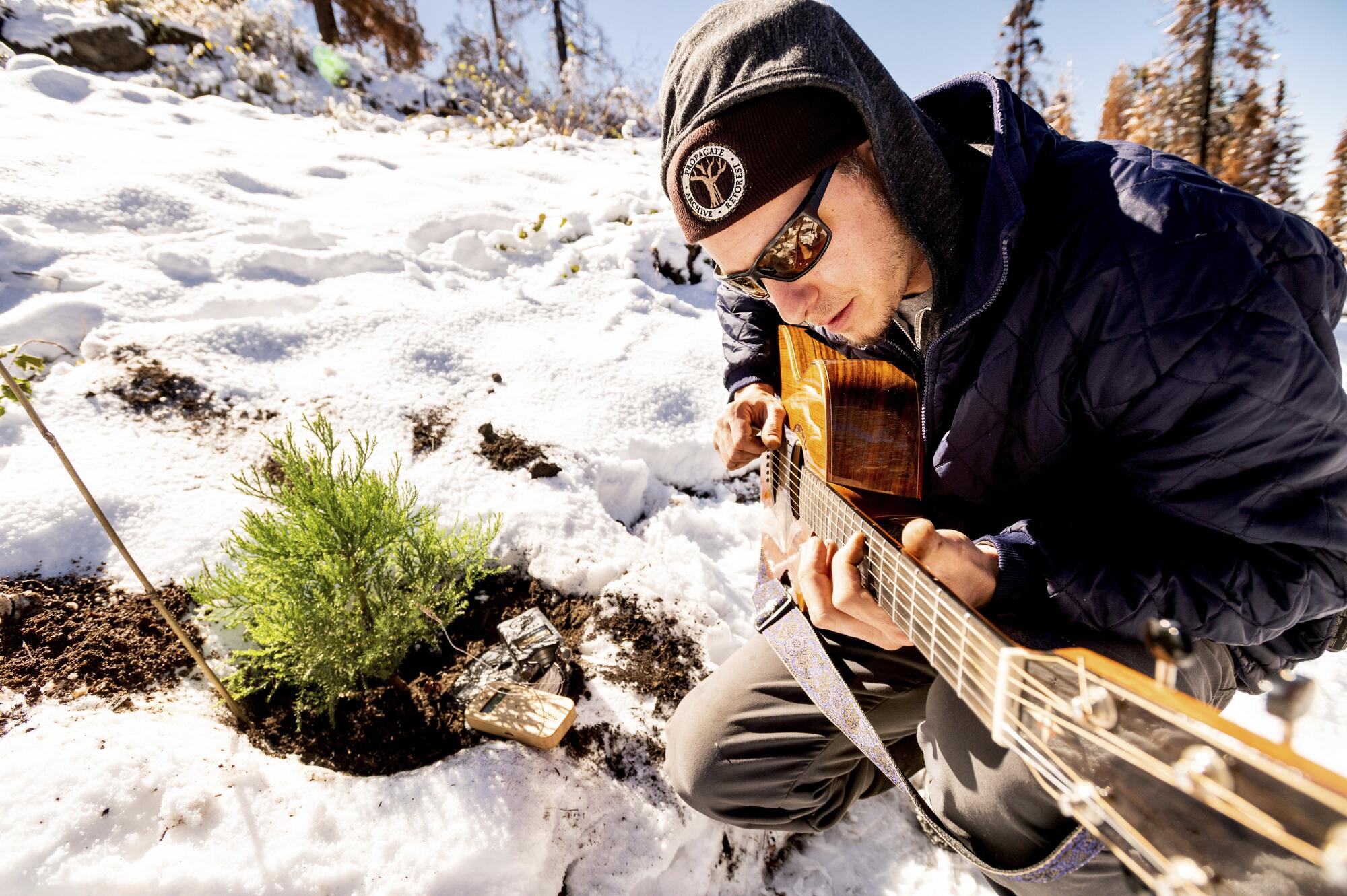

More to Read
Sign up for Essential California
The most important California stories and recommendations in your inbox every morning.
You may occasionally receive promotional content from the Los Angeles Times.










